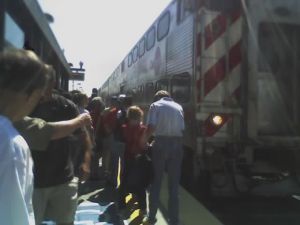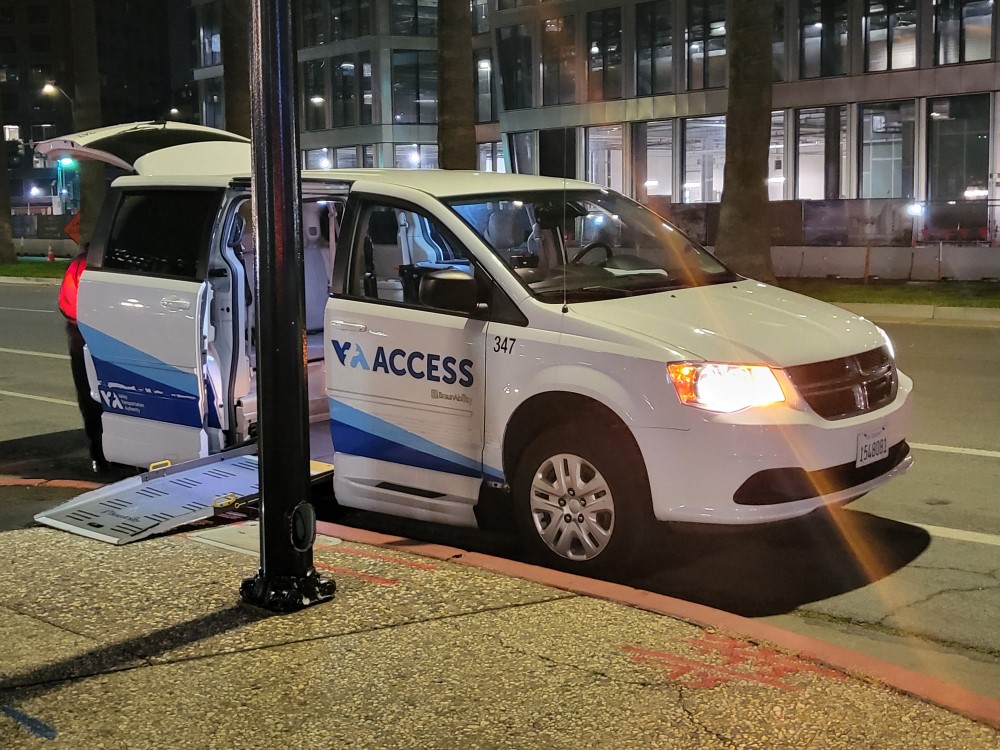
California Governor Gavin Newsom’s latest state budget proposal cuts funding for public transit. If passed into law in June, it would result in fare hikes and service reductions for many transit agencies throughout California. This as several key Bay Area transit agencies like Bay Area Rapid Transit (BART) and Caltrain struggle to regain pre-COVID pandemic ridership. This also occurs as many public transit agencies are running out of federal COVID relief funding to run their buses and trains.
Our group is part of a coalition to have the California State Legislature pass “gap” funding in the State Budget until public transit agencies pass their own operations funding means.
Read more on what’s going on, and how YOU can get involved.
Table of Contents
- What’s Going On?
- Bay Area Agencies Affected
- Effects Of Lack Of Public Transit Funding
- What Can I Do Now?
- Conclusion
What’s Going On?
Many public transit agencies nationwide are struggling to regain ridership, post-COVID pandemic. The rise of “work-from-anywhere” in corporate culture is one such factor. As a result, they are not receiving the farebox revenue needed to keep buses and trains running, as COVID relief funding they received from the federal government runs out. This comes as the state of California is currently facing a $22.5 billion shortfall, as of this writing.
The site governing.com reports that California’s transit agencies, via the California Transit Association, are asking the state for $5.5 billion, to help plug a $6 billion deficit among all transit agencies in the state.
An article in New York magazine sums up the deficit situation transit agencies nationwide are facing, post-COVID pandemic:
In 2024, [Washington] D.C.’s WMATA is staring down a $738 million shortfall, Boston’s MBTA will see a $475 million one, and New York’s MTA will see a deficit of more than $1 billion (that figure would have been higher were it not for the recent passage of state aid). BART’s deficit will hit $340 million by 2027, and systems in Chicago and Philadelphia are anticipating similar numbers.
https://nymag.com/intelligencer/2023/05/americas-mass-transit-systems-are-speeding-toward-a-cliff.html
Here’s how New York City won funding for more frequent subway service thru Riders Alliance lobbying Governor Hochul…
Bay Area Agencies Affected
In the Bay Area, San Francisco’s MUNI faces a $214 million deficit, with the possibility of 25% less service. Bay Area Rapid Transit (BART) currently has operating deficits of about $78 million; they are due to run out of federal COVID relief funding in 2025. Caltrain is facing a deficit that could balloon to $500 million over the next decade.
How Is VTA Affected?
The Santa Clara Valley Transportation Authority (VTA) currently has a $32.9 million operating surplus – for now. This is for the second quarter of the 2023 Fiscal Year. Read more on how your money is collected – and spent – running VTA buses and light rail.
Adina Levin from Friends of Caltrain wrote more information on VTA’s current financial situation. The information was based on a written request I made to VTA’s Administration and Finance committee earlier this year. This is part of the response I received from VTA:
From a VTA Transit Operating perspective, our current average monthly expenditures (“burn rate”) through January of fiscal year 2023 are approximately $42.8 million per month. VTA’s current fare revenue, sales tax receipts and other income are covering this monthly spend, and VTA anticipates this to continue through the end of fiscal year 2023. As a result, VTA does not anticipate using any federal dollars in fiscal year 2023. Additionally, all efforts are being made to ensure a balanced budget is adopted for VTA’s next biennial budget cycle (fiscal years 2024 and 2025); therefore, not utilizing any federal dollars for deficit mitigation.
Effects Of Lack Of Public Transit Funding
Imagine BART and Caltrain running only once an hour on weekdays, including rush hour – and no more weekend service. This as opposed to every 10-30 minutes now, with weekend service. Worse, some stations may be forced to close, just as Caltrain electrifies its system from San Francisco to San Jose.
While you’re at it, imagine bus lines in San Francisco like the 38 Geary running every hour on weekdays – and no weekend service. Bus lines throughout the Bay Area have to reduce or even eliminate service, leaving some cities with no public transit service at all.

For seniors and the disabled who depend on paratransit for their mobility, and live far from a bus line whose service ends, this ends any independence they have. They would be forced to depend on relatives or friends to get them around for their appointments, school, etc.
Hurt the most by lack of public transit funding: those who don’t have their own automobile, due to health, financial and/or legal reasons. Worse, those who can afford to do so would have to return to their car and contribute to traffic gridlock for their mobility. This would make it harder for folks to get to appointments, work, school, or shopping for everyone. Based on figures calculated for 2022, the average cost of owning a car – new or used – is over $10,000/year.
Could you afford an extra $10,000 or more per year to maintain an automobile in these uncertain times?
Are you emotionally ready to re-enter traffic gridlock and risk being involved in an automobile accident to make your appointment, or put food on your table?

Think about it.
According to our colleagues at TransForm:
If the state declines to provide funding to help cover the $2.5 billion [Bay Area] shortfall, it would end up costing society – and a lot of individuals – at least $5 billion in direct costs, plus the additional unestimated costs of higher emissions, negative health, safety, and environmental outcomes, and increased congestion.
That is, it would be cheaper to save transit than to let it fail.
https://cal.streetsblog.org/2023/05/11/analysis-saving-transit-would-be-cheaper-than-letting-it-die/
Steps YOU can take right now to help prevent this from happening are below.
What Can I Do Now?
Call your California State Assemblymember and State Senator. Let that person and their staff know that public transit needs to be included in the State Budget proposal. When asked to do so, give them your name and where you live, politely reminding them that you are one of that Senator’s or that Assemblymember’s constituents.
Not sure who represents you in the California State Legislature? Visit this site and input your address and zip code, then click Locate. You will be provided with the name of the State Assemblymember and State Senator who represents you. Click the link indicating that person for more information on how to contact who represents you.
No computer access? In Santa Clara County, call the County Registrar’s office at (408)299-8683 during normal business hours. When calling, ask for information on who represents you in the State Legislature.
In other counties throughout California, call your County Registrar’s Office to obtain this information.
In contacting your State Legislature representatives, tell them why you need public transit. Urge them to support State Senator Wiener’s proposal.
Pass this message out to those who don’t have computer access. Have them call their State Legislature representatives to urge them to ensure public transit is included in this year’s State Budget.
Conclusion
Governor Newsom and the State Legislature have until June 15 to pass the State Budget. Let’s work together to ensure public transit is in the State Budget proposal.
Eugene Bradley
Founder, Silicon Valley Transit Users